Tuvalu Flag Meaning
A light blue field with the Union Jack in the canton and nine yellow stars representing the nine atolls of Tuvalu, symbolizing the Pacific Ocean that surrounds the islands, the historical connection to Britain, and the geographical arrangement of the island nation in the central Pacific.
- Continent
- Oceania
- Adopted
- 1978
- Ratio
- 1:2
- Colors
- light blue, blue, white, red, yellow
- Designer
- Unknown
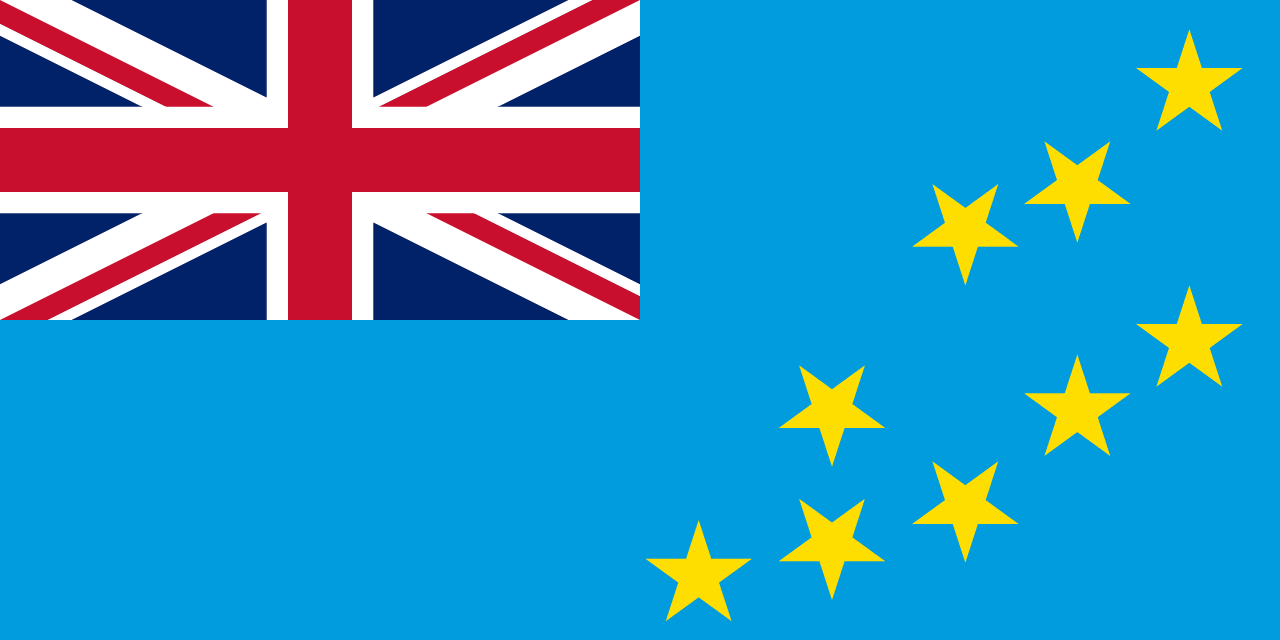
Symbolism
Light Blue Field: Represents the vast Pacific Ocean that surrounds Tuvalu's nine atolls, symbolizing the marine environment that sustains the population and the endless blue waters that define life on these remote islands.
Union Jack: Represents Tuvalu's historical connection to Britain as a former colony and current Commonwealth member, symbolizing the constitutional monarchy system and legal traditions inherited from British rule.
Nine Yellow Stars: Represent the nine inhabited atolls of Tuvalu arranged in their geographical pattern, with each star symbolizing one of the islands: Funafuti, Nanumea, Nui, Nukufetau, Nukulaelae, Vaitupu, Nanumanga, Niutao, and Niulakita.
Star Arrangement: The stars are positioned to reflect the actual geographical layout of the atolls in the Pacific Ocean, creating a unique flag design that serves as both symbol and map of the nation.
History
- Pre-European Era: Polynesian settlers arrived around 1,000-2,000 years ago, developing a maritime culture adapted to atoll life with sophisticated navigation techniques, fishing practices, and social systems based on extended families.
- 1568: Spanish explorer Álvaro de Mendaña was likely the first European to sight the islands, though sustained European contact would not occur for several more centuries.
- 1819-1820s: British and American whalers began visiting the islands, followed by traders and missionaries who gradually introduced Christianity and Western goods while disrupting traditional society.
- 1860s-1870s: Blackbirding (forced labor recruitment) devastated the population as Peruvian and Fijian recruiters kidnapped islanders for plantation work, reducing the population by about 40%.
- 1892: Britain established the Gilbert and Ellice Islands Protectorate, bringing the Ellice Islands (now Tuvalu) under colonial administration alongside the Gilbert Islands (now Kiribati).
- 1916-1976: The protectorate became a crown colony, with gradual introduction of modern administration, education, and healthcare, though the remote location meant limited development and continued subsistence lifestyle.
- 1974: A referendum showed that Ellice Islanders wanted separation from the Gilbert Islands due to ethnic and cultural differences between Polynesian and Micronesian populations.
- October 1, 1975: The Ellice Islands became the separate colony of Tuvalu, beginning the final transition to independence with its own administration and preparation for self-government.
- October 1, 1978: Tuvalu gained independence from Britain, adopting the current flag and becoming one of the world's smallest sovereign nations by both area and population.
- 1980s-1990s: Economic challenges led to significant emigration to New Zealand and Australia, while the country struggled to develop sustainable revenue sources beyond subsistence agriculture and fishing.
- 2000: Tuvalu leased its .tv internet domain to a California company for $50 million over 12 years, providing crucial revenue for the small nation and highlighting creative approaches to economic development.
- 2000s-Present: Climate change has become an existential threat, with rising sea levels threatening to make Tuvalu uninhabitable, leading to international advocacy for climate action and discussions about climate migration.
Trivia
- Tuvalu is the fourth-smallest country in the world by land area (26 square kilometers) and the second-smallest by population (about 12,000 people), making it one of the most remote nations on Earth.
- The flag represents a country that is extremely vulnerable to climate change, with the highest point only 4.6 meters above sea level, making it one of the first nations potentially threatened by rising seas.
- Tuvalu's .tv internet domain has become a significant source of revenue, with the country earning millions from companies wanting the catchy domain for television and video-related websites.
- The country has no rivers or streams, relying entirely on rainwater collection and groundwater, making water security a constant concern especially during droughts.
- Tuvaluan and English are the official languages, with Tuvaluan being a Polynesian language closely related to Samoan and other Pacific languages.
- The flag flies over a nation where traditional culture remains strong, with communal land ownership, extended family systems, and traditional dancing and music continuing to play central roles.
- Tuvalu has one of the world's shortest airstrips, located on Funafuti atoll, which can only accommodate small aircraft and serves as the country's only airport.
- The country produces almost no food for export, with subsistence agriculture focusing on coconuts, pulaka (taro), and fishing being the main economic activities for most families.
- Traditional navigation techniques using stars, currents, and wildlife patterns are still practiced by some Tuvaluans, preserving ancient Polynesian seafaring knowledge.
- The flag represents a country where climate migration is becoming reality, with some families already relocating to New Zealand and Australia due to environmental concerns.
- Tuvalu is a constitutional monarchy with Queen Elizabeth II (now King Charles III) as head of state, represented by a Governor-General, while local governance follows traditional consensus-based decision making.
- The country has no military forces and relies on Australia and New Zealand for defense under informal arrangements, focusing instead on fisheries protection and maritime security.
- Traditional foods include coconut crab, fish, coconuts, and pulaka, with modern imported foods supplementing the traditional diet due to limited agricultural diversity.
- The flag represents a country that joined the United Nations in 2000 as one of its smallest members, using its membership to advocate for climate action and small island state rights.
- Despite its tiny size, Tuvalu plays an active role in Pacific regional organizations and has become a powerful voice in international climate change negotiations.
Related Countries
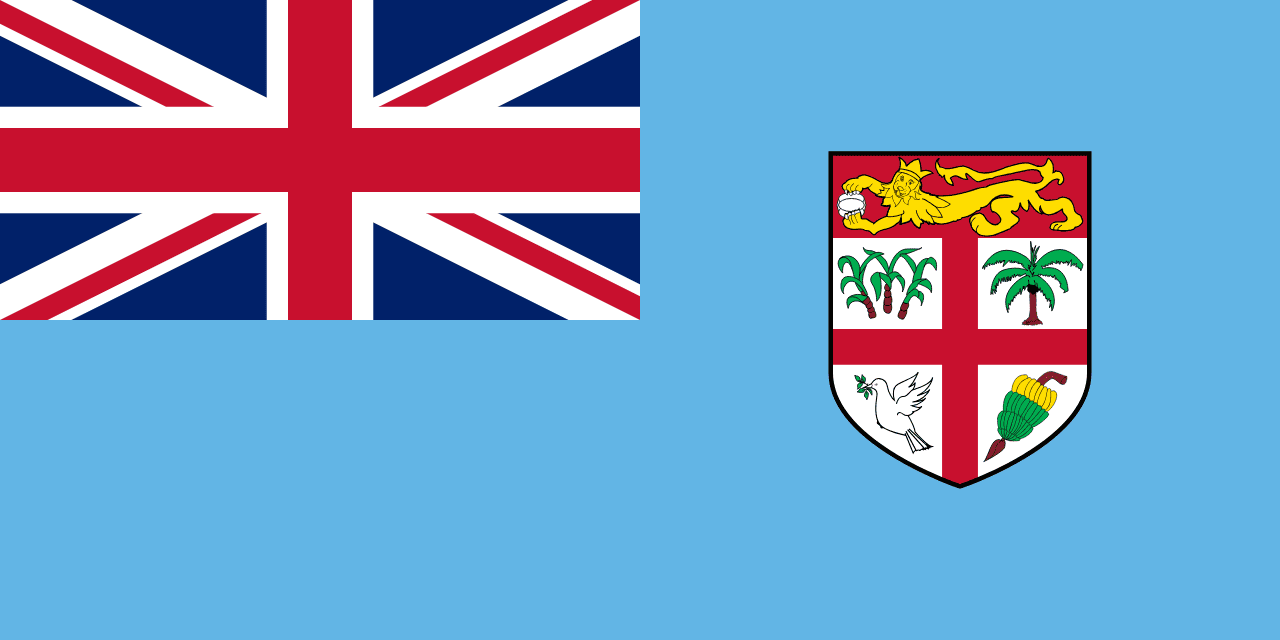
Fiji
Oceania
A light blue field with the Union Jack in the canton and Fiji's coat of arms on the fly side, representing the Pacific Ocean, British heritage, and the agricultural and maritime traditions of this island nation.
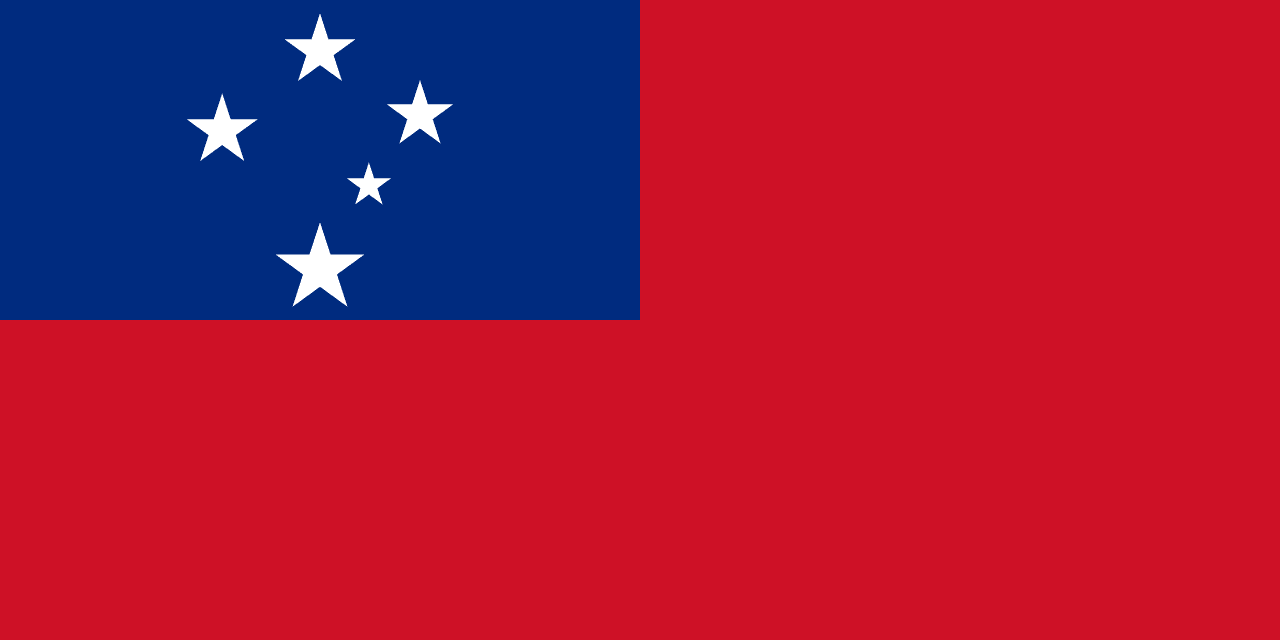
Samoa
Oceania
A red field with a blue rectangle in the upper hoist containing the Southern Cross constellation in white. The flag reflects Samoan heritage and its place in the South Pacific.
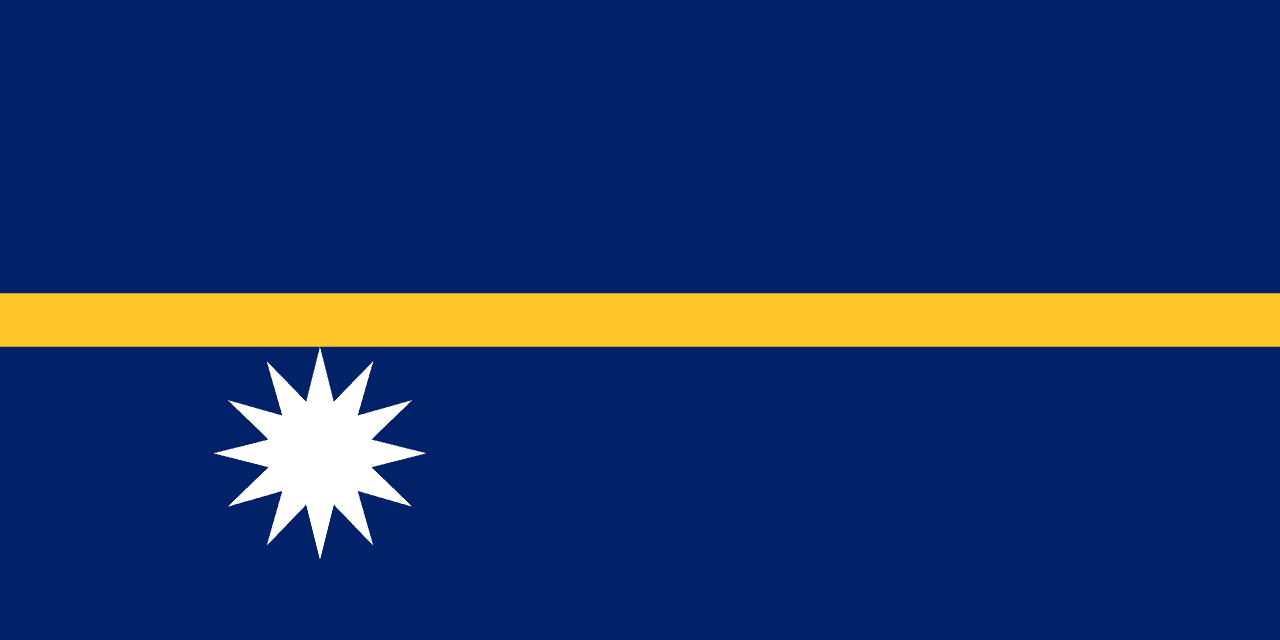
Nauru
Oceania
A blue field with a horizontal yellow stripe across the center and a white twelve-pointed star below the stripe near the hoist. The design reflects Nauru’s position just south of the equator and its cultural identity.
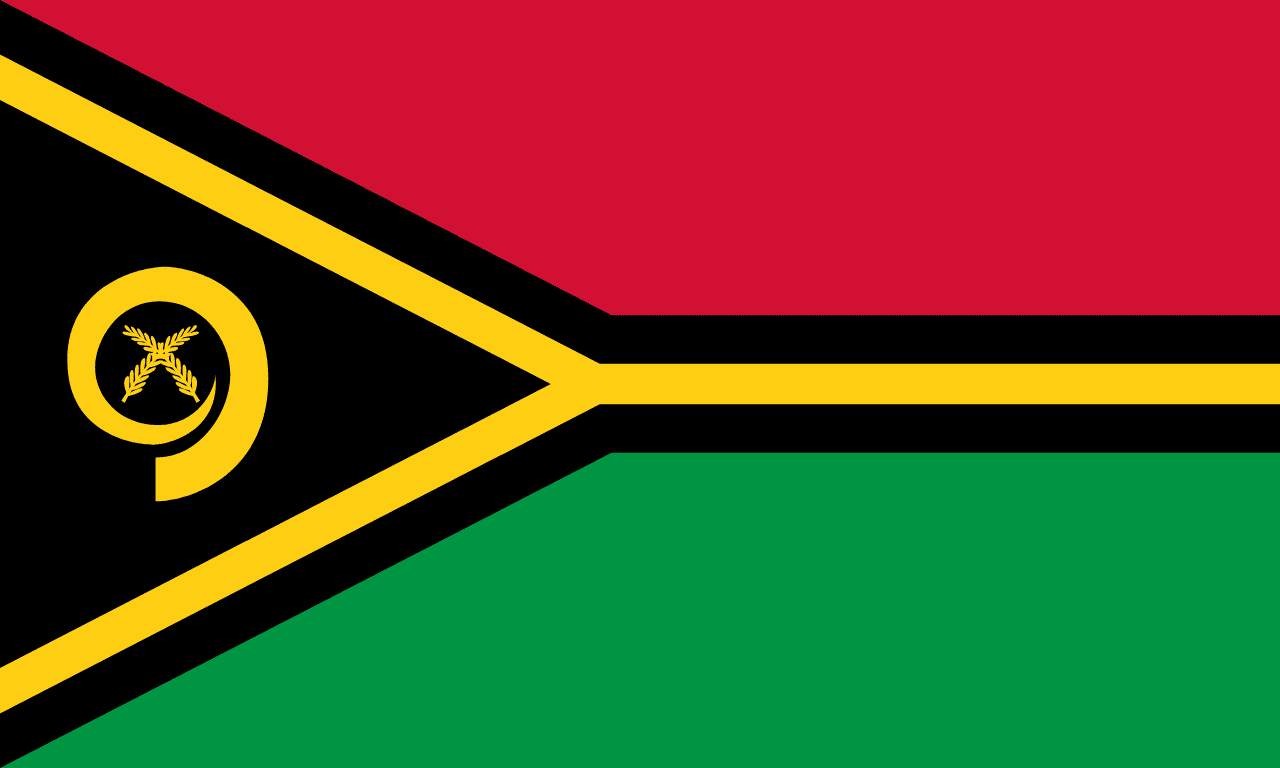
Vanuatu
Oceania
Red and green horizontal bands separated by a black stripe edged in yellow, with a yellow Y-shape extending from the hoist containing a boar's tusk and two crossed fern leaves, representing the blood of sacrifice, the rich soil, the Melanesian people, enlightenment, and traditional Melanesian values and culture.
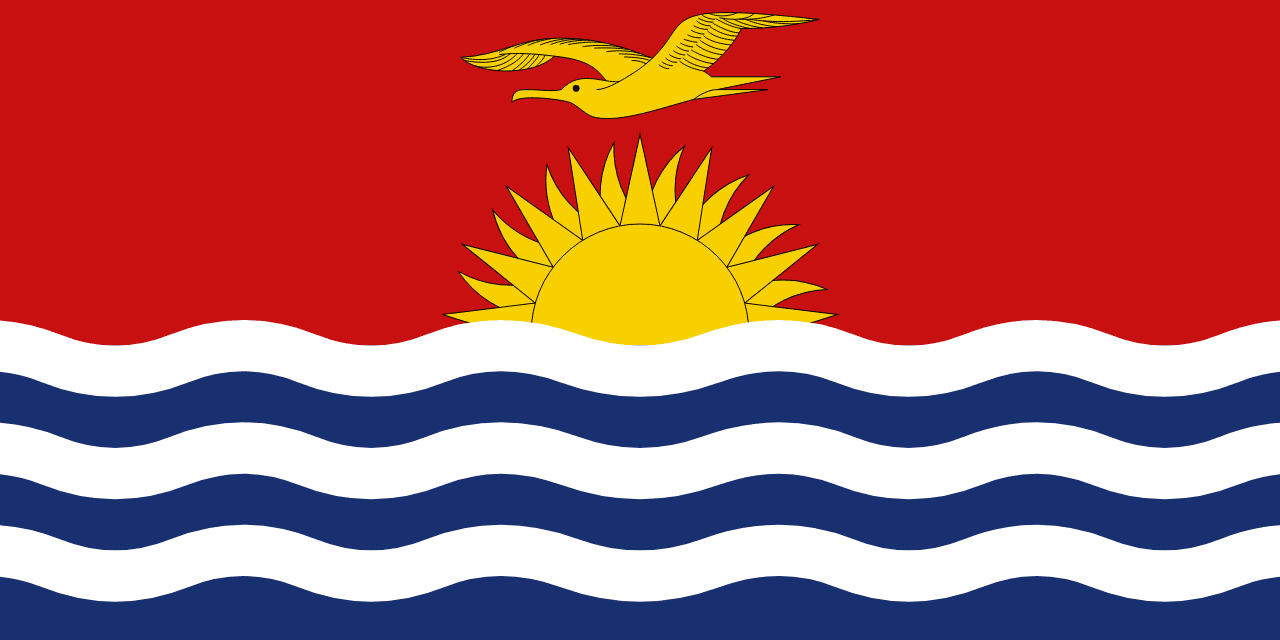
Kiribati
Oceania
A red upper field with a golden frigatebird flying over a rising sun above blue and white wavy stripes, representing the Pacific sunrise, ocean waves, and the unique geography of this coral atoll nation spread across the international dateline.
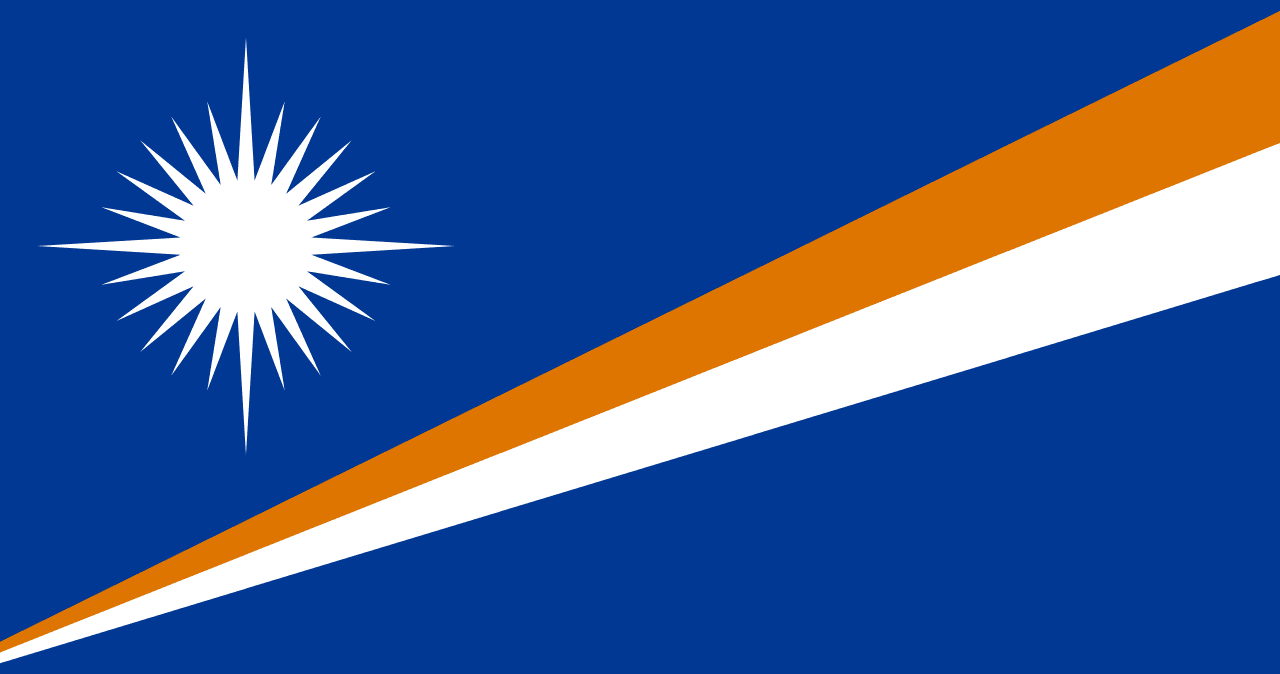
Marshall Islands
Oceania
A blue field with diagonal orange and white stripes extending from the lower left, and a white 24-pointed star in the upper left corner, representing the Pacific Ocean, the island chains, and the Christian faith of this coral atoll nation.